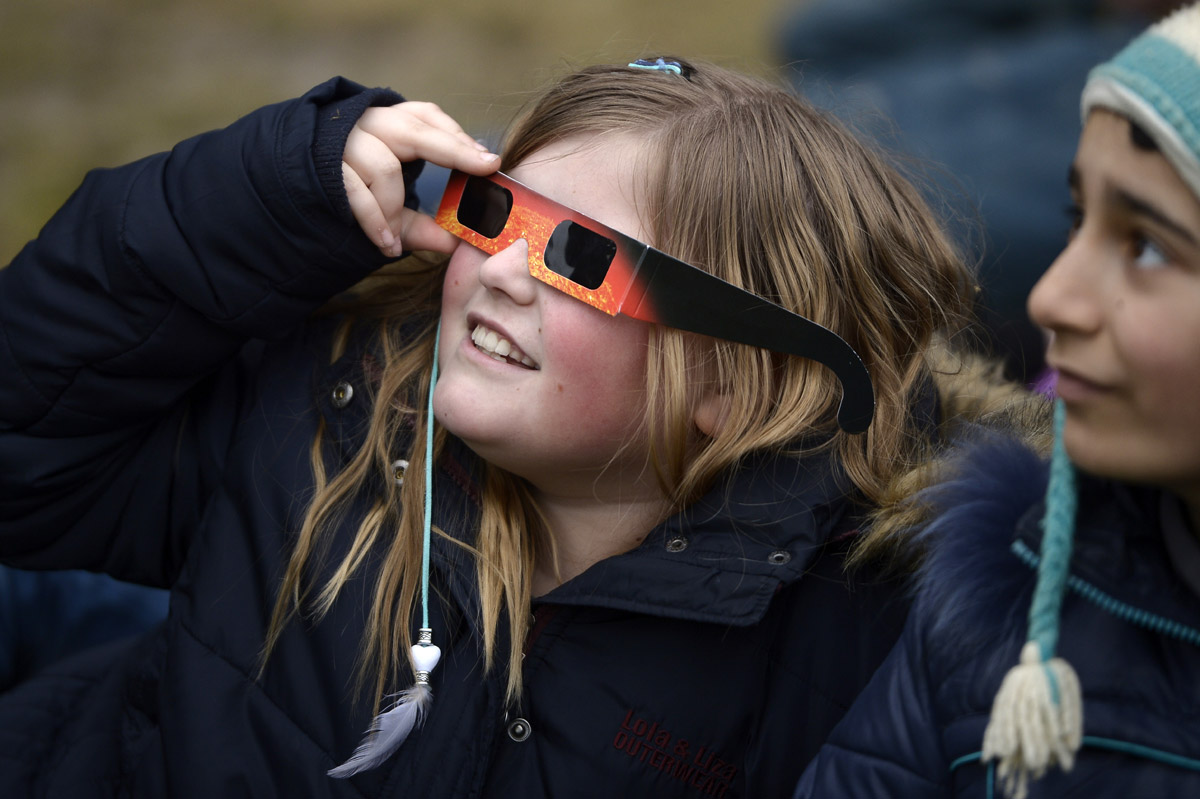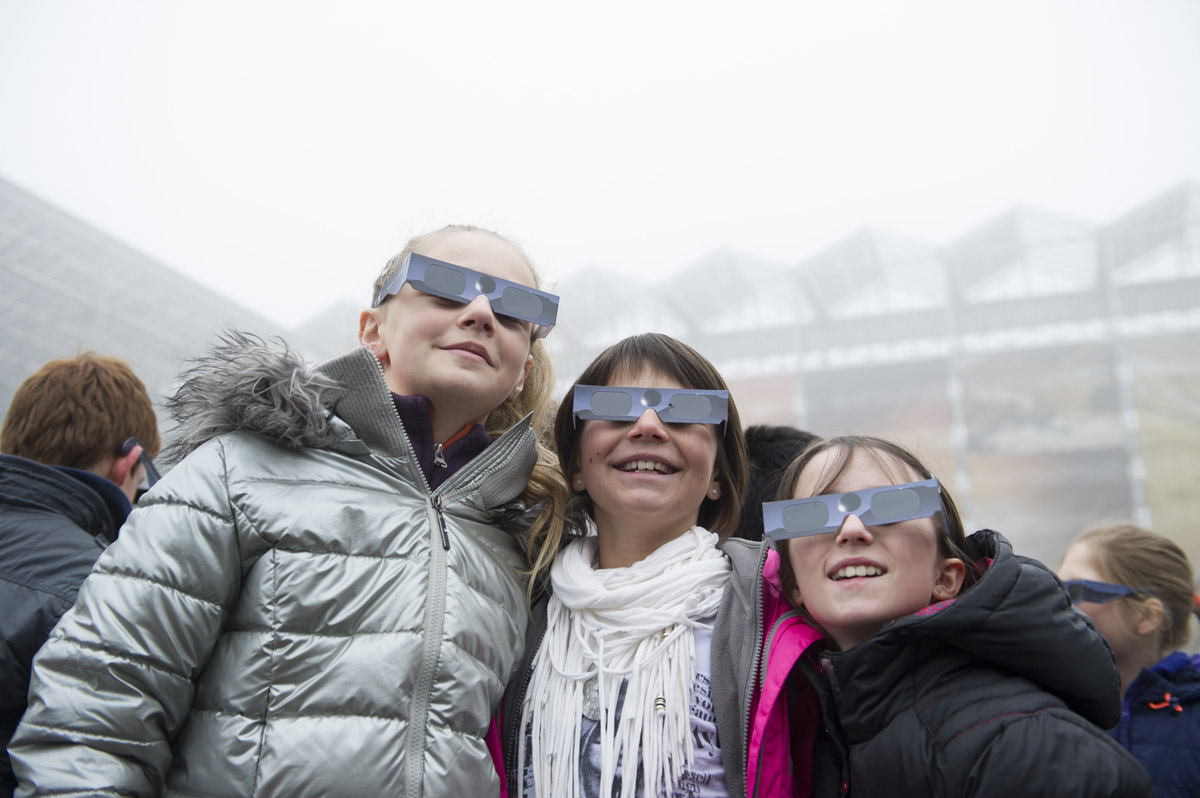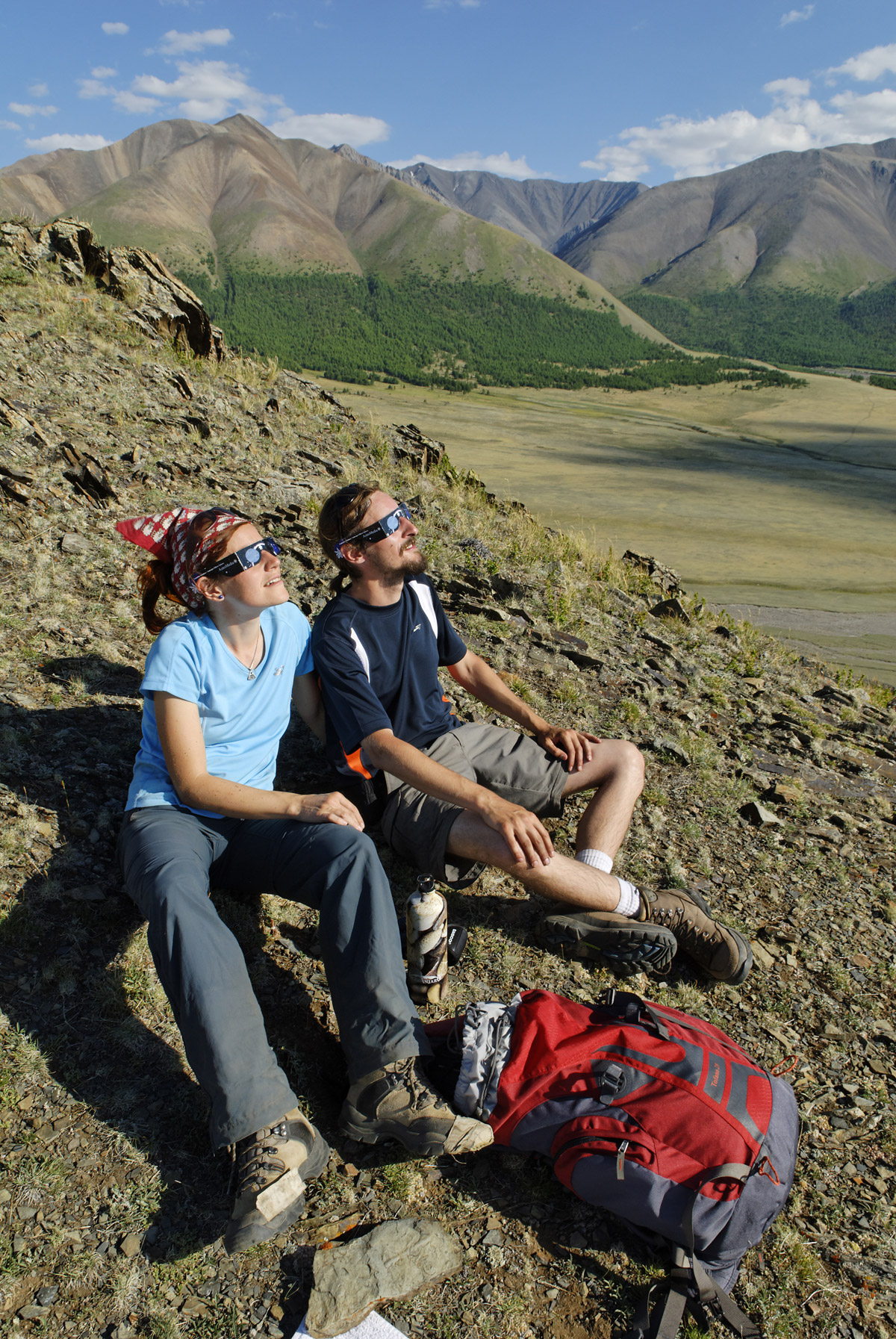ARTICLE AD

Today’s the big day! For the first time since August 2017, parts of North America are getting a total solar eclipse. Depending on where you are on the continent, you’ll get to see the sun, moon, and Earth line up to varying degrees, with the luckiest people seeing it at its totality along a path that runs from Dallas, TX to Little Rock, AR to Cleveland, OH, Buffalo, NY, and Caribou, ME. The total path stretches about 115 miles across the continent. Here are the major cities and the local time for total eclipse:
Dallas, Texas: 1:40-1:44 p.m. CDT
Idabel, Oklahoma: 1:45-1:49 p.m. CDT
Little Rock, Arkansas: 1:51-1:54 p.m. CDT
Poplar Bluff, Missouri: 1:56-2:00 p.m. CDT
Paducah, Kentucky: 2-2:02 p.m. CDT
Carbondale, Illinois: 1:59-2:03 p.m. CDT
Evansville, Indiana: 2:02-2:05 p.m. CDT
Cleveland, Ohio: 3:13-3:17 p.m. EDT
Erie, Pennsylvania: 3:16-3:20 p.m. EDT
Buffalo, New York: 3:18-3:22 p.m. EDT
Burlington, Vermont: 3:26-3:29 p.m. EDT
Lancaster, New Hampshire: 3:27-3:30 p.m. EDT
Caribou, Maine: 3:32-3:34 p.m. EDT
I am so jealous if you are in or close to the line of totality! Regardless of whether or not you’re in that direct line, you may be planning on checking the eclipse out anyway. I know I am! If you are planning to watch any part of it, you probably bought the specialized glasses for safe viewing. And that’s great! One of my most vivid memories of the 2017 eclipse was the former President of the United States looking up at it without glasses. Don’t be like that guy. Here’s some ways to safely view the eclipse, courtesy of USA Today:
Unlike partial solar eclipses, a total eclipse offers spectators a unique opportunity to gaze upon it with the naked eye, but only when the moon completely blocks out the sun and darkness falls – referred to as totality.
While you’re unlikely to go blind, gazing directly at the sun’s rays can do some serious damage to your retinas. So until the moment that totality occurs, proper safety eyewear is still a must, according to NASA.
While some welding goggles may work, the best option for eclipse viewing remains certified eyewear, which is held to an international safety standard and is 100,000 times darker than most sunglasses to block nearly all visible, infrared and ultraviolet light.
Solar eclipse glasses are readily available from plenty of vendors across the internet, but if you want to save some cash, there’s a good chance your local library or another public institution is giving them away for free. Just watch out for cheap imitations. To make it easy while you’re shopping online, the American Astronomical Society maintains a curated list of approved vendors. Another simple method is to create your own pinhole projector to project the sun onto a nearby surface. The American Astronomical Society offers helpful instructions to set them up as well.
Also, one more thing to note is to not drive during the eclipse. People may get behind the wheel thinking that they don’t care or they’re only going to glance at it, but that feels like one of those cases of the best laid plans and all that. While my area is not in the path of totality, we are expected to get within 70-86%, so I bought the special eclipse glasses for me and my family to use to watch them. Just to be on the safe side, People has a great guide to test whether or not you have real solar eclipse glasses. If you’re planning on watching the eclipse today, make sure you’re doing it safely!
My area also didn’t get the eclipse at 100% back in 2017, but it still went pretty dark. I actually do remember the eerie, yet very full silence of the moment. It was really powerful. There won’t be another total solar eclipse until August 2044, and that one will start in Greenland and go through Canada before finishing up in just three US States: Montana, North Dakota, and South Dakota. Things like this feel pretty humbling, like they’re forcing us to sit up, take in, and recognize the bigger picture of the world around us.
Photos credit: Yorick Jansens/Anthony Dehez/Belga Press/Avalon, Egmont Strigl/ImageBroker/Avalon, and Getty

 9 months ago
40
9 months ago
40 



